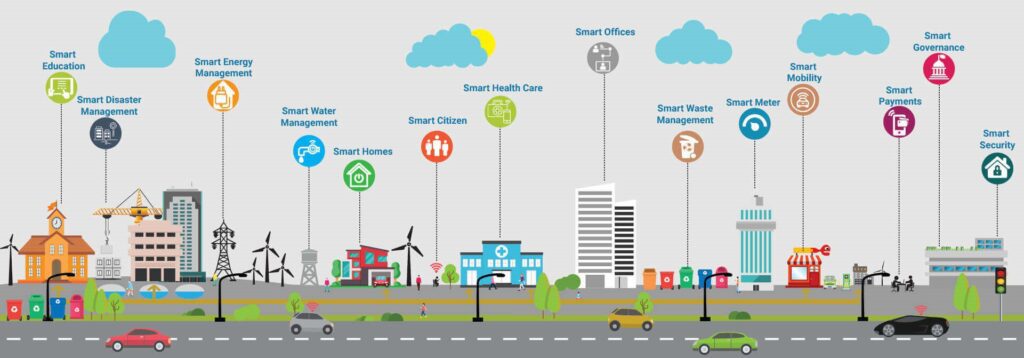Latest Multi-Cloud Market Trends in 2022-2023
Why is there a need for Cloud Computing?#
Cloud computing is getting famous as an alternative to physical storage. Various advantages enable business organizers to prefer cloud computing to other data servers and storage options. One of the most prominent reasons setting the global acceptance and upsurge in the use of cloud computing is cost-saving applications of cloud computing reducing the cost of hardware and software required at the consumer end. The versatility of cloud computing provides the option to workload data access online through the internet from anywhere in the world with restriction of access timing. The innovation in cloud computing such as the integration of paying options, and switching over to applications in an easy manner highlights the growing need for cloud computing as a future solution to computing.
The effectiveness of cloud computing is linked to its massive use as a driver of transformation interlinking artificial intelligence, the Internet of Things (IoT) with remote and hybrid working. The involvement of metaverse, cloud-based gaming technologies, and even virtual and augmented reality (VR/AR). Using cloud computing enables users to avoid investing in buying or either owning an infrastructure that facilitates complex computing applications. Cloud computing is an example of “as-a-service” that makes running servers and data centers located miles apart like a connected ecosystem of technologies.
Multi-Cloud Market and its Trends in 2022 - 2023#
Early Trends#
The rise of cloud computing in the year 2020 and 2021 promises that market trends and acceptability to use multi-cloud computing will further increase. It was post-pandemic that the focus was on digital applications for conducting business within safety limits. With the development of new technologies and capabilities in cloud computing, every organization and business house is starting to get cloud computing integrated with daily business operations. Multi-cloud computing is a system of tools and process that helps organize, integrate, control, and manage the operations of more than one cloud service that were provided by more than one service vendor. As per the reports from Gartner, the predicted spending on the usage of multi-cloud services has reached \$482.155 billion in the year 2022 which is 20% more spending than in 2020.
Innovation Requirement#
The current market management of multi-cloud is segmented on the lines of deployment and market size. The strategic geographic location and demographic trends are also shaping the growth of multi-cloud use. Multi-cloud computing is resulting in increased usage of artificial intelligence (AI), and the internet of Things (IoT). Thus, further accelerating the use of remote and hybrid working as a new business culture. The role of multi-cloud is to be an enabler to move forward swiftly with the development of new technologies such as virtual and augmented reality (AR/VR), the metaverse, cloud-based virtual gaming, and leading quantum computing as well. By 2028, it is expected that the multi-cloud market will grow to become a multimillion-USD service industry.
Trends of Multi-cloud Computing in Asian Markets#
In the Asian region, the use multi-cloud market will increase because of greater workforce dependency on computing-related businesses. International Digitial Corporation (IDC) projected that in 2023, South Asian companies will generate 15% more revenue from digital products. A major bulk of this revenue will be based on growth and the emergence of multi-cloud services. Thus, one in every three companies will conduct business and earn 15% more while working on the cloud in 2023. In 2020, every one in six companies was getting benefitted from the cloud market. The existence of cloud computing knowledge is leading the upward trends in the Asian market.

Asian and African countries have traditionally been a place of physical connection rather than virtual ones. But, the pandemic of Covid-19 has changed that perception and the cultural stigma of going away to work. Governments of India, China, Hong Kong, Thailand, and Singapore are working towards taking their workloads on virtual cloud formats. Therefore, focusing on the future resilience of the work in case of the sudden emergence of any public health disaster. Thus, multi-cloud has become a prominent driver in changing the working process and methods of business. All organizations are developing contingency planning and emergency data recovery solutions. Multi-cloud provides recovery opportunities by storing the data on separate cloud providers.
The emergence and growth of multi-cloud computing is the next revolution in the IT world. The post-pandemic trends reflect greater demand for resilient infrastructure to safeguard businesses from global calamities in the near future. Therefore, Asian and South Asian countries are taking up multi-cloud computing as an alternative to private cloud services. Small and medium organizations in Asian countries are also taking up advantage of multi-cloud computing to improve their business prospects.


